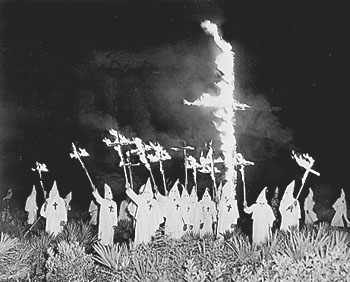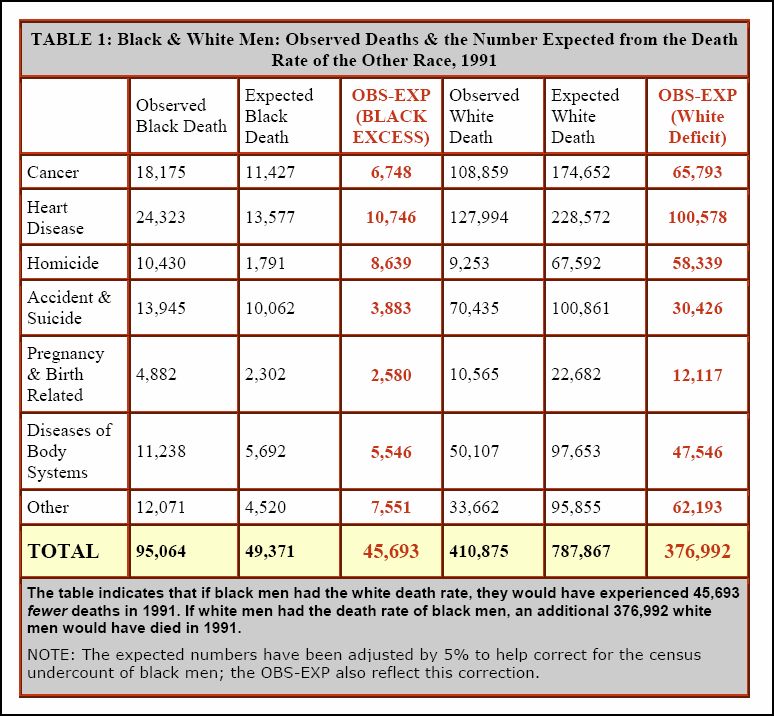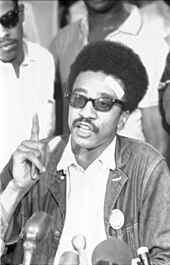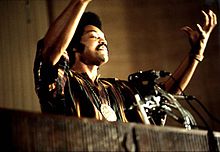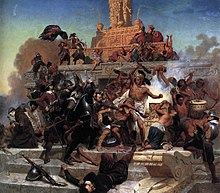Death Toll: 5,000,000 – 17,000,000 in the Slave Trade; Millions Dead from Colonialism
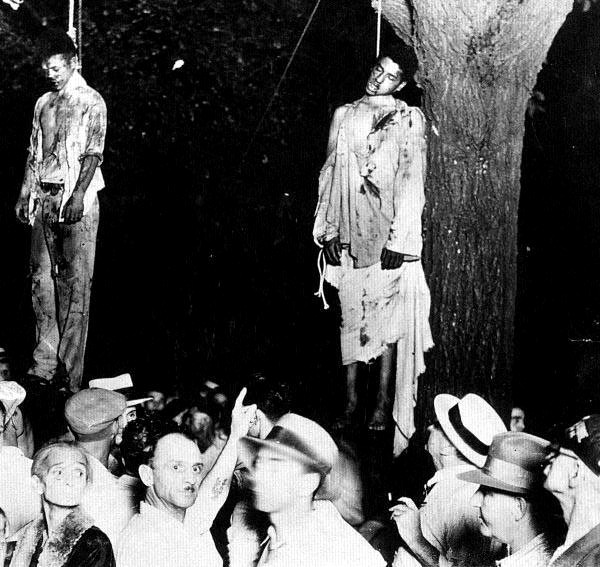
Strange Fruit
By Billie Holiday
Southern trees bear strange fruit,
Blood on the leaves and blood at the root,
Black body swinging in the Southern breeze,
Strange fruit hanging from the poplar trees.
Pastoral scene of the gallant South,
The bulging eyes and the twisted mouth,
Scent of magnolia sweet and fresh,
Then the sudden smell of burning flesh!
Here is fruit for the crows to pluck,
For the rain to gather, for the wind to suck,
For the sun to rot, for the tree to drop,
Here is a strange and bitter crop.
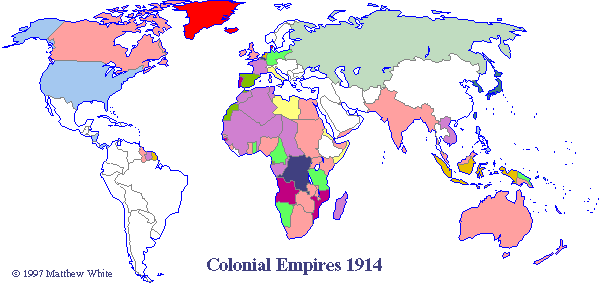
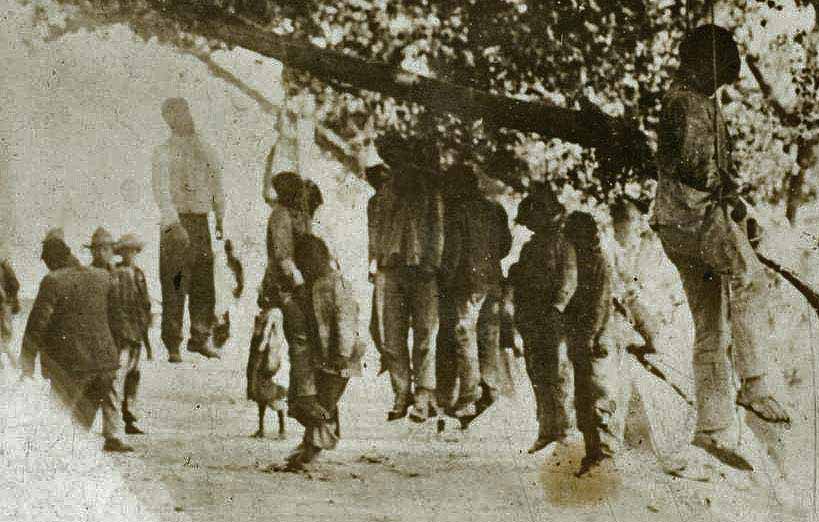
When WE speak of the genocide being committed against Afrikan people on a global scale, this is the work of the system of white supremacy and the individual whites of which this system is comprised. How can I say this? On what basis? In what ways is this genocide manifested?
This is manifested in the form of the French who trained Hutu extremists before the 1994 genocide in Rwanda.
This is the death penalty being the rule when the accused is Black and the victim is white.
WE are speaking of the King Alfred plan drafted by the United States government to incinerate Afrikan (Black) people in the event of a large scale “breakdown in social order”.
What is meant when WE charge genocide? WE are speaking of the disease and virus creation program of South Africa aimed at the isolation or creation of a virus that selectively kills Black people.
WE are speaking of the Tuskeegee Syphilis experiment.
WE are speaking of the origin of gynecology.
WE are speaking of the complete and utter decimation and extermination of the Black people of Tasmania.
WE are speaking about the decimation of the Herrero people in Namibia in Germany’s Black Holocaust.
WE are talking about the CIA bringing crack into Black communities.
What are WE speaking of when WE are speaking of genocide? WE are speaking of De Beers fomenting civil war atrocities in Sierra Leone for blood “conflict” diamonds.
WE are speaking about racial profiling.
WE are speaking of the disproportionate amount of Afrikan children in special education.
What is meant by the term genocide when WE charge the system of white supremacy and the individuals of which it is comprised with genocide?
WE are speaking of the past and current lynching of Afrikan people.
WE are speaking of the murder of Fred Hampton.
WE are speaking of police brutality in prisons.
WE are speaking of King Leopold chopping off the hands of hundreds of thousands of Afrikan people for rubber.
WE are speaking of Hurricane Katrina evacuees being turned back to desolation and ruin at gunpoint.
WE are speaking of population control through AIDS.
WE are speaking of the Tulsa Race Riot and domestic terrorism.
WE are speaking about the FBI COINTELPRO program and the war against Black people.
WE are speaking of the white supremacists swooping down on oil-rich land after it has been conveniently “cleansed” by the CIA supported Sudanese government.
WE are speaking of five-year-old little Black girls handcuffed and taken by the police.
WE are speaking of dogs being trained to maim and kill Afrikans.
WE are speaking of the role of Halliburton and other multinational corporations in the Congo genocide that has killed more than 3.2 million Afrikans since 1998.
WE are speaking of the murder of Kenneth Walker.
WE are speaking of Amadou Diallo, Malcolm X, Patrice Lumumba, the more than one hundred million long rotted Afrikan corpses at the bottom of the Atlantic Ocean from the “Middle Passage”.
WE are speaking about Mary Turner’s belly being cut open as her unborn fetus was crushed by a white supremacist’s boot heel.
WE are speaking about drugs that have failed human safety testing in the United States being sent to Africa for use.
This list could go on ad infinitum.
By Obadele Kambon
All Diamonds are Blood Diamonds
- Africa and all its resources are the birthright of African people everywhere All Diamonds are Blood Diamonds
- The U.S. invasion and occupation of Iraq has forced us to recognize the terrible price paid by peoples around the world the oil reserves necessary for the daily functioning of the U.S. economic life. The slogan is “No blood for oil.”
- In the Niger Delta of Nigeria African people living in dire poverty are fighting shell Oil for control over the multi-dollar oil industry on their own land. 70 percent on less than a dollar a day. The poverty, lack of electricity and sanitation and profound pollution. Yet Shell Oil and other oil corporations have made more than $300 billion on Nigerian oil. White people live in mansions with big SUVs in the same area. The people of this area are waging armed struggle. They say if they cannot benefit from the oil, no one will benefit from the oil. They call it “blood oil.”
- The U.S. and European controlled chocolate industry in Africa is a bitter reality. Ivory Coast produces 40 percent of the world’s cocoa and in West Africa there are more than a quarter million young African children working in enslavement in the cocoa plantations. All chocolate is blood chocolate.
- We can even show that even aluminum foil can be called Blood aluminum . In Guinea Conakry earlier this year there was a general strike for over a month. Guinea has 40 percent of the world’s bauxite, the mineral needed to make aluminum, but the average income of those considered “middle class” is $500 a year. Alcoa, Reynolds and other corporations are making billions of dollars but the people are forced to live under a repressive government and cannot even afford to buy rice in a country where gas costs almost $5 a liter.
- In Congo 5 million people have been killed in the past few years in U.S. and imperialist backed wars over Coltan the mineral that is the electrical conductor necessary for cell phones and computers. 80 percent of the world’s coltan is in Congo. So we say all computers and cell phones are blood computers and cell phones. Coltan worth over $400 a pound in a world where 1.7 billion people have wireless phones–one out of every 4 on the planet. Child labor, murder, dire poverty–a few dollars a day at best–rape, death in the mines–thousands die in the mine shafts and also from starvation–mostly children.
- Blood cell phones and computers
- We don’t have to go to Africa or other places. The U.S. is built on African enslaved labor. IIn the U.S. a multitude o products such as office furniture, jeans, clothing, bedding, clocks and signs are made by slave labor inside of prisons. The prison industry has half a million workers more than any Fortune 500 corporation. With more than 2 million mostly African and Mexican people incarcerated With more than 2 million mostly African and Mexican people incarcerated inside the U.S. facing Three Strikes and mandatory minimums, one in three African men between the ages of 20 and 29 is either in jail, on probation or parole. In a private Texas prison guards were videotaped beating, shocking, kicking and setting dogs on prisoners—what u.S. soldiers did in Abu Ghraib has been practiced against African people in U.S. prisons for years. So we can say all prison products are blood products.
- In a system built on centuries of the enslavement of African people, on genocide, oppression and colonialism in this country and around the world we can say that beneath the sparkling veneer of every resource that we take for granted is a very ugly story.
- So this is the context that we say that All diamonds are blood diamonds!
- We are sold the idea that diamonds are a symbol of beauty and long-lasting love. “Diamonds are forever,” “a girl’s best friend.”
- The truth about diamonds is not beautiful—diamonds are steeped genocide, colonialism, poverty and oppression–controlled by the brutal DeBeers diamond cartel.
- In 1938 DeBeers cartel hired a Philadelphia public relations firm when sales were sagging– to market to Americans that diamond rings were a necessity for engagements and weddings. In the past diamonds were relatively rare as engagement rings. To do this they launched slogan “A diamond is forever,” and promoted the myth that a diamond ring should cost two months salary.
- The reality is diamonds are not particularly valuable. They can be found around the world. Their value is created by manufactured scarcity—forcibly keeping diamonds off the market to increase their value. Unlike most other precious stones they do no appreciate with age and have a poor resale value.
- Finest large gem-quality diamonds come from Sierra Leone, along with Angola, Namibia and Congo.
- Diamonds are not just for jewelry–it is the strongest material in the world.Used in cutting, in airplanes and in defense–ESSENTIAL to the U.S. military industry. Industrial diamonds worth $10,000 a pound.
- DeBeers is a cartel which is a monopoly that controls every aspect of the economy of the product. DeBeers controls not only mining but cutting, polishing, setting into jewelry, pricing and selling world wide. Millions of children and very young people involved in diamond industry.
- The concept of blood or conflict diamonds came about in reference to the brutal imperialist backed wars in Sierra Leone and West Africa in the 1990s.
- Sierra Leone is a former British colony on the West Coast of Africa.
- British colonialism In the 1700s Bunce Island in the Sierra Leone River was called the “slave factory.” From here the British supplied captive Africans particularly to Charlestown South Carolina and to Georgia. Americans. The North American slave ships that called at Bunce Island were sailing out of Newport (Rhode Island), New London (Connecticut), Salem (Massachusetts), and New York.
- More than 50,000 Africans were kidnapped from Sierra Leone mostly into South Carolina and Georgia. They were called the Gullah people–worked in rice paddies in cotton plantations in the U.S. They were fierce fighters and many escaped from enslavement by joining the Seminoles in Florida where they built thatched roof houses as in their homeland. Thatched roof–environmentally sustainable!
- Sierra Leone won nominal independence from Britain in 1961 with the establishment of neocolonialism as in the rest of Africa.
- Sierra Leone is one of the most impoverished countries in the world–most of the people live on less than a dollar a day. It has the highest infant mortality in the world and the life expectancy for men is 38 years.
- Yet Sierra Leone has immense natural resources Diamonds-some of the best in the world Titanium ore (red)– ・ in the aerospace industry – for example in aircraft engines and air frames; ・ for replacement hip joints; ・ for pipes, etc, in the nuclear, oil and chemical industries where corrosion is likely to occur. Bauxite used for aluminum Gold Chromite (green) used in stainless steel.
- Chromite–stainless steel. As in the rest of Africa the profits and benefits of Sierra Leone’s natural resources are in Europe and North America. Although the resources are on their land, the people are deeply impoverished. 80 percent of households in Sierra Leone must use charcoal and wood for cooking. . In the world 2.4 billion people still cook over wood , charcoal or dung fires.
- Neocolonialism. Former British colonizers continue to control the economy, the military and the governing of Sierra Leone — neocolonialism leaving only crumbs. Along with other imperialist states they continue to extract the wealth.
- In the 1990s The Revolutionary United Front emerged led by Foday Sankoh. At first the people thought they were fighting in the interest of the people. But they were imperialist influenced fighting for crumbs of the colonial plunder. They launched a brutal war against the people of Sierra Leone with 50,000 murdered and tens of thousands of mutilations. It is said that DeBeers and Israel were the biggest benefactors of the war.
- By cutting off the people’s hands-signature torture used by the Belgian colonizers against African people in Congo during Belgian colonialism.
- The RUF forced young children to fight and to carry out most of the atrocities–often against other children The child soldiers given tea, coffee and stimulant drugs.
- RUF took over some of the diamond mines–this is a picture of one — and began selling diamonds on the open market outside of the control of DeBeers.
- From DeBeers website Because this served to depress DeBeers artificially high prices for diamonds based on manufactured scarcity, the DeBeers cartel was threatened. This prompted DeBeers to come up with the concept of the “blood” or “conflict” diamond–not because of concern for the people but because they did not want to see the price of diamonds go down.
- So DeBeers diamond cartel set up the Kimberley Process Certification Scheme–that would supposedly determine if a diamond is “blood” or clean. Police policing themselves–like Alberto Gonzalez policing himself.
- The reality is DeBeers is the key figure behind the issue of blood diamonds. Under the “legitimate” diamond mines of Sierra Leone–meaning the DeBeers and imperialist controlled mines–African miners are forced to work for almost nothing. Most of the diggers must work “independently getting only a tiny percentage on any diamonds that they find which are taken by the mine. Only a few workers actually get a salary–from 30 cents to $2 a day. Nicky Oppenheimer and CEOs of DeBeers–one world’s richest men worth 3 billion dollars–eats organic foods and farm.
- According to an international trade union report 72 percent of the children of Sierra Leone between the ages of 5 to 14 are forced into paid or unpaid labor–in the legitimate diamonds mines or other industry. In that region nearly a half million children are forced into labor. Childhood is a result of privilege.
- There is no electrical grid. Only oil lanterns at night. Only electricity is from generators and 82% of that is in Freetown. In sierra Leone only 1% use generators and 85 percent use oil lamps.
- Sierra Leone has no running water, no water purification system, little hygiene or few toilets.
- Sierra Leone has no system of roads, few paved roads and most roads are impassable in rainy season.
- How things got the way they are
- Africa is the birthplace of civilization–all science, mathematics, art, philosophy, religion and archeology originated in Africa. Sierra Leone and most of West Africa was part of the African civilization of Mali (the people called it Manden) from 1235 to 1645 — ended by the enslavement of African people. It had enormous influence in the whole world. One of its cities Timbuktu was a center of learning–people came from everywhere to study and to enjoy the lively social and artistic culture. There was a medical school that taught delicate eye operations to remove cataracts. Mansa Musa was one of the famous rulers of Mali in the 1300s. He brought architects and scholars into Mali. His rule was known for prosperity and stability of the country as well as for artistic, educational and technological achievement.
- Europe in the middle ages was backwards, disease ridden, poor oppressed and warlike.
- In the 1300s the plague swept through Europe killing up to a half of the population and destroying the already impoverished agricultural economy of feudalism.
- Europe rescued itself by its assault on Africa. In 1415 Henry the Navigator (never sailed a ship) sent Portuguese fleets out to the west coast of Africa to attempt to gain control of the wealthy African trade in gold, silver and other resources–trade that had gone on for centuries–millennia–connecting trade routes to the Middle East and Asia. They found African people themselves to be their most valuable commodity. The Arabs had a trade in African people as slaves for a thousand years. The slave trade started almost 80 years before Columbus sailed for the Americas By 1500 Portugal had extracted 700 tons of African gold, shipping it to Portugal and had kidnapped more than 81,000 African people into slavery.
- Men, women and children in chains were stacked on top of each other on pallets in the holds of ships with the hideous stench of open pits of human waste. The pallets (seen on the lower left) were no more than 15 inches high. Hundreds of thousands of African people died of disease or starvation, or were murdered for attempted resistance and thrown overboard. The ecology of the Atlantic Ocean was changed by the slave trade. Schools of sharks would follow the slave ships to feed off the African men, women and children who died and were murdered on board and who were thrown overboard.
- The trade in African people was the key ingredient in the triangular trade bringing captives from Africa as forced labor for the plantations of the Americas, transporting resources such as cotton, sugar, tobacco and rum to North America and to England.
- Along with the assault on Africa was the genocide against the Indigenous people and the theft of their land and resources. Above is aftermath of U.S. slaughter at Wounded Knee in 1890. And VOLUNTEER cavalry.
- This slaughter, genocide, rape and plunder of the peoples of the Earth brought unprecedented wealth into Europe for the first time.
- This is what brought about the industrial revolution and transform Europe from feudalism to capitalism.
- In the U.S. the “founding fathers” were slave masters, owners of African people and instigators of the genocide against the Indigenous people. This is the “founding values” of America. This slide shows an idealized, falsified serene picture of the treatment by George Washington of enslaved Africans who was known for his brutality. Washington “owned” more than 300 African people, giving them meager daily rations of a few ounces of grain and fish by-products.
- There were tens of thousands of burnings and lynchings like this one in Kansas City.
- Children at lynchings
- As Omali Ye****ela, Chairman of the African People’s Socialist Party and leader of the Uhuru Movement states all classes of white people sit on the pedestal of the enslavement of African people and colonized and oppressed peoples around the world.
- Wall Street was the center of New York’s slave auction blocks. In the 18th and 19th centuries enslaved Africans were one fifth the population of New York. When the civil war was declared, New York was so dependent on the cotton industry that the city considered joining the Confederacy. It is telling that an African cemetery was found in recent years under the high rise buildings of Wall Streets—American wealth resting literally on the bodies of African people.
- White people sit on the pedestal of slavery and genocide.
- Throughout Africa and the Americas the resistance of African people was fierce and powerful. We do not learn enough about that–covered over in history books. On the slave ships resistance was the major cause of death for captain and crew. The African Revolution in Haiti in the early 19th century, resistance by the Maroons in the Caribbean and South America the resistance of Denmark Vesey, Nat Turner, two city-wide African rebellions in New York City, Gabriel Prosser, Cinque, Harriet Tubman. In Brazil, Surinam–everywhere Africans were enslaved they were in a state of resistance.
- The Shona, Zulu, Chokwe and many other African peoples waged fierce resistance to colonialism and the colonial borders imposed by the Berlin conference. The Ashanti people in Ghana waged armed resistance to the British for 200 years.Above is Yaa Asantewaa, the Ashanti woman resistance leader in 1900.
- King Leopold of Belgium was a leading Abolitionist of his day. He was responsible for turning Congo into a rubber plantation to provide tires for bicycles and the newly emerging automobile industry in Europe and the U.S. in the 1890s. At least 10 million Africans were slaughtered by Leopold’s forces before there was even a word for genocide. Millions had their hands chopped off for resisting being enslaved on their own land. People were sexually assaulted and mutilated. Children were stolen from their parents and taken into camps to be groomed as a colonial army–genocide under international law. Leopold GAVE Congo to Belgium–it was his personal business!
- The scramble for Africa and Africa’s resources. At least two million Africans were killed in the scramble for ivory tusks for piano keys and billiard balls–the center of the ivory trade was Connecticut.
- 80 percent of the Nama and Herero peoples in Namibia were wiped out by the Germans They were rounded up and left to die in the desert without food, water or shelter to die a slow torturous death. Germany has never recognized this genocide or paid reparations even as they paid billions in reparations to Israel. Same methods used by Hitler.
- During this same time the British colonizer Cecil Rhodes came to southern Africa. Rhodes was an ideological colonizer. He believed in British imperialism and promoted it. He said to “prevent civil war you must become an imperialist “ among the workers of England….He created the Rhodes scholarship.
- His goal was to install British imperialism from Cape Town to Cairo and built the Cape-Cairo railway.
- His vision was part of the British empire on which they boasted “the sun never set” because it went around the world. The British empire included 77 countries including India and15 countries in Africa. 458 million people were oppressed in this empire–one quarter of the world’s population at that time under British colonialism. At that time England had the highest standard of living in the world based on the near starvation of the people in Africa, India and the other colonies.
- Cecil Rhodes was a perpetrator of genocide, responsible for the displacement of millions of African people for the benefit of white settlers and enslavement of African people on their own land. White people came from Europe and became wealthy from the theft of the gold and diamonds in Southern Africa. Pass laws.
- Cecil Rhodes founded DeBeers diamond cartel. Rhodes went to south Africa from Britain when he was 18 years sold–he took over the diamond mines at Kimberley south Africa and others in the area. By his early 20s he was a millionaire but he did not retire–he believed in subjugating Africa for the benefit of England.
- Rhodes went to Zimbabwe, the land of the Matabele and Shona who launched fierce resistance led by their leader Lobengula.
- Rhodes paid a mercenary army from England and stocked them with Maxim machine guns. With just 5 machine guns the English slaughtered 5,000 African people in one afternoon alone–then they celebrated with dinner and champagne.
- Winston Churchill and Baden Powell boy scouts. Cecil Rhodes, gay, said he, “thoroughly enjoyed the outing.” Saw the slaughter of Africans as sport and adventure.
- The Chokwe, Shona and Zulu people were among those who led powerful struggles against the European invasions.
- Cecil Rhodes helped set up the apartheid system in south Africa and the pass laws–based on the Jim Crow laws of the United States.
- Pass laws, colonial taxation of African people to force them to work to be used as near slave labor in the diamond mines.
- Africans in the diamond mines were forced to stay away from family and wife, in compounds with only cold tea and bread.–much the same conditions today.
- When Cecil Rhodes died the DeBeers diamond cartel was taken over by the Oppenheimer family.
- The atrocities that took place in Sierra Leone and West Africa were what DeBeers itself has done to African people for a hundred years. On knees Africans, with cans, body cavity searches, Zulu forced to pull rickshaw for owners.
- Diamonds have long played a role in neocolonialism in Africa. Mobutu’s villa on the Riviera , his diamonds, Mobutu one of richest men in the world which says something about the worth of the resources in Congo. CIA worked with Kennedy, Eisenhower and DeBeers to assassinate Lumumba.
- Neocolonialism continues today. Mandela with Nicky Oppenheimer in front of statue of Cecil Rhodes. Mandela has praised DeBeers and Cecil Rhodes. Below: Mandela with Mobutu
- Under Mandela and the ANC the conditions are worse for African workers and better for white people. Today 12 years after the end of apartheid, 61 percent of African people live below the poverty line in South Africa, while only one percent of whites. 96 percent of commercial arable land is still in the hands of whites. Conditions are 14 percent BETTER for white people than they were under apartheid.
- Africa also has up to 90 percent of the world’s reserves of cobalt, manganese, chromium and platinum–in West and Southern Africa. U.S. military needs these to function in the defense industry. Pentagon report say they would do anything to maintain those resources.
- U.S. military and AFRICOM in Africa–says its in the name of “war on terror” U.S. military deploys well over half a million soldiers, spies, technicians, teachers, dependents, and civilian contractors in other nations.US has more than 700 military bases–growing to 1000 by end of decade in 130 countries around the world.
- What is the solution?
- Our lifestyle requires the suffering of African people–in this country There is colonialism inside the U.S. Two Americas Wake up to reality.
- In Africa–our lives are at the expense of African people.
- African people are a colony inside the U.S.–not racism- not ideas inside our heads–political and economic relationship–same as in Iraq, Palestine etc. Two Americas.
- Uhuru Movement is led by Omali Ye****ela, leader of the African People’s Socialist Party, united African People around the world for one united and liberated Africa. In the spirit of Marcus Garvey, Malcolm X, Kwame Nkrumah, Patrice Lumumba.
- Africans are one people all over the world.
- Not charity, not peace corps, missionaries, movie stars adopting African babies.
- African resources belong to African people everywhere!
- Building the African Socialist International around the world. Touch One! Touch All!
- Africa in the hands of African working class people, not neocolonialists.
- Unite with the struggle for reparations to African people!

